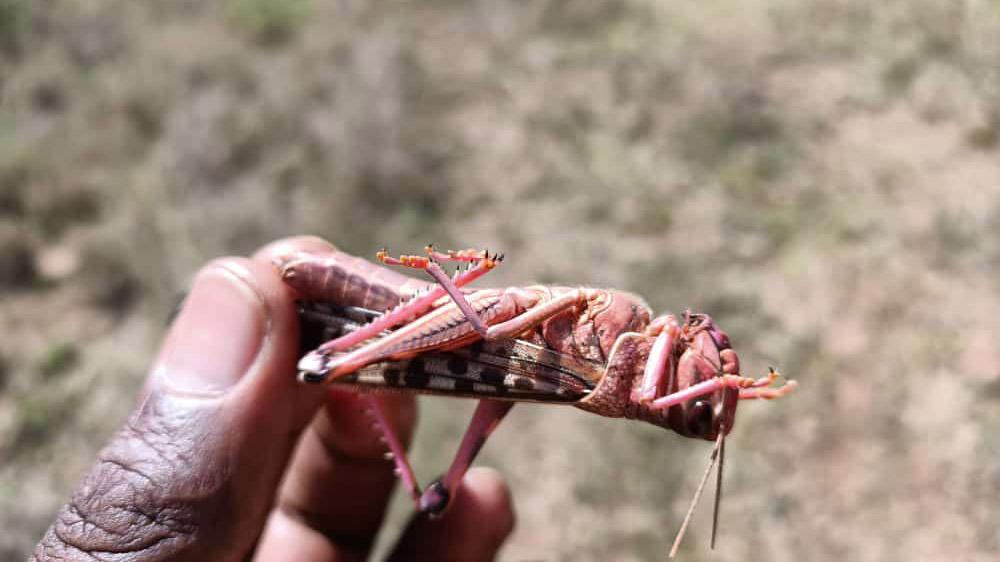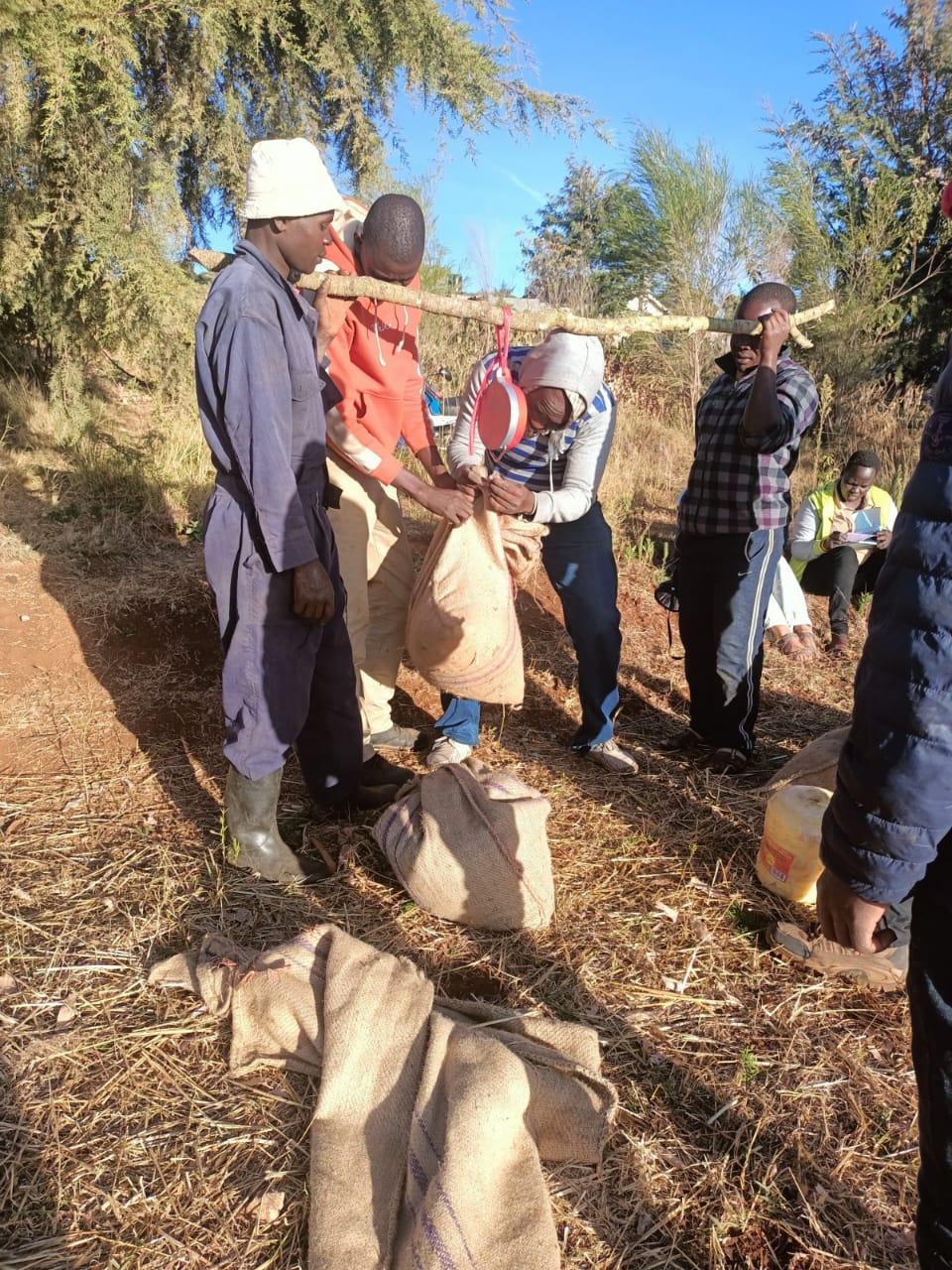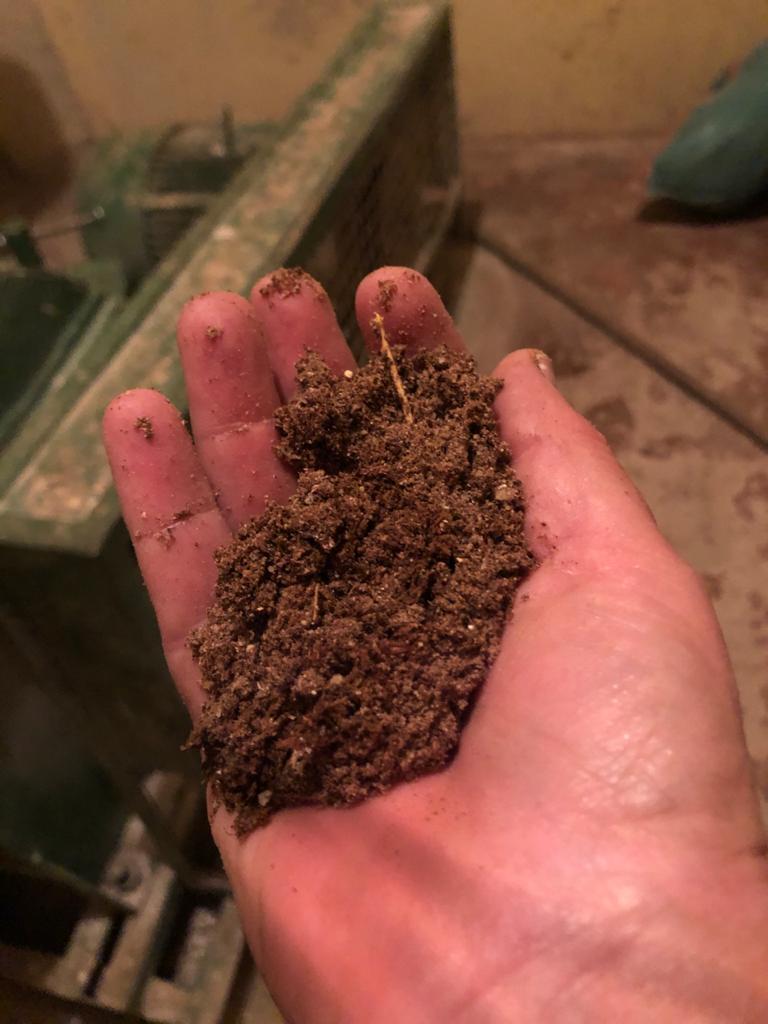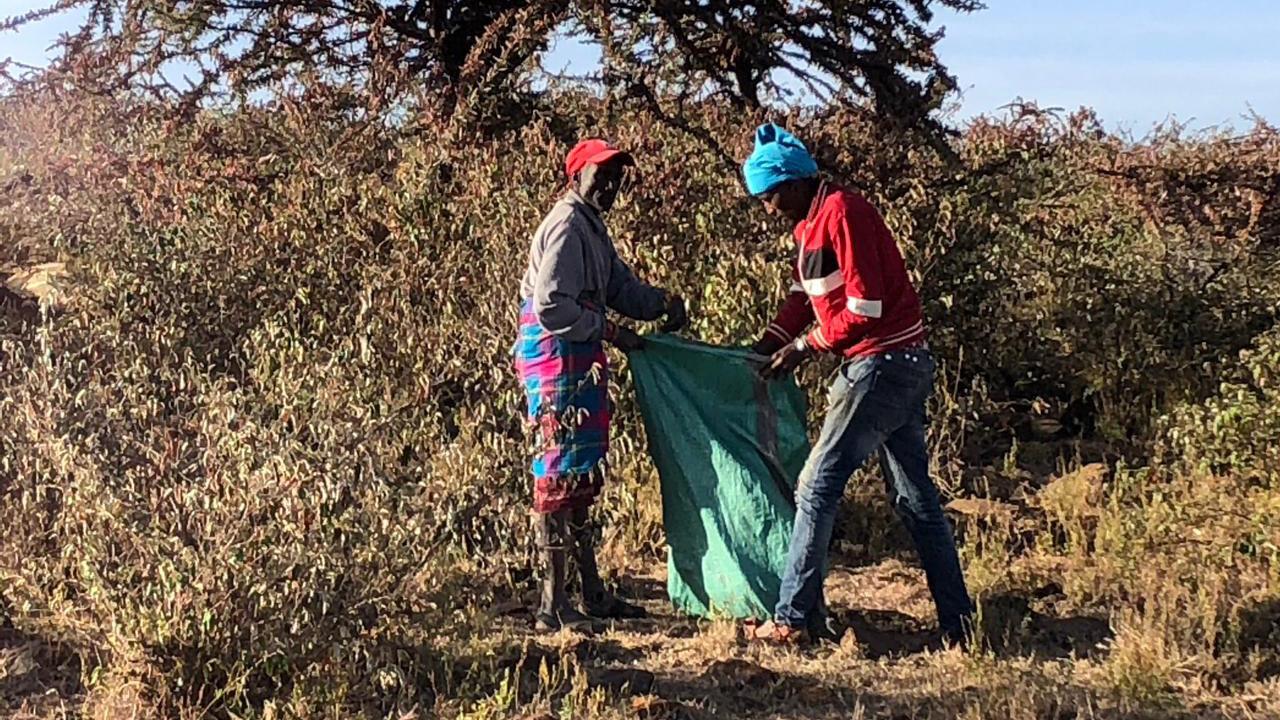Most people associate a swarm of desert locusts with destruction.
The Bug Picture, an insect-protein company, sees something else — an opportunity.
The start-up has worked for the last six weeks in Kenya to pilot a program that pays farmers to collect locusts from their fields in exchange for cash.
Related: Coronavirus — and locusts — threaten Kenya’s food security

Parts of East Africa have seen the worst locust outbreak in 70 years over the past 14 months, devastating food sources and costing billions of dollars in crop damage.
A report out last week from the United Nations’ Food and Agriculture Organization is calling for cautious optimism in the region, saying there has been a decline in swarms.
Related: New ICARUS tracking system helps scientists unlock mysteries of migration
But insect-protein entrepreneurs are already planning for the next outbreak.

“Our locust project is getting people thinking about locusts in a different way,” said Scilla Allen, a project manager with The Bug Picture, with headquarters in Rwanda. The company has been turning insects into animal feed and compost since 2018.
Over the past six weeks, the company collected more than 4 tons of locusts, and they’re still hunting for more, with plans to scale up.
Their main business is raising black soldier flies as animal feed, but since January, they’ve focused on locust collection with funding from Danida, a Danish humanitarian emergency relief fund.
Once The Bug Picture locates a swarm, they follow it and reach out to the affected community.
“We issue bags and we issue big plastic sheets,” Allen said.
They teach people the best way to capture locusts, waiting until the coolest part of the night, when the insects rest on vegetation, immobilized by the cold.
“And you can literally shake the tree, and they will fall from the tree onto a black sheet, and then you just pour from the sheet into the sack,” Allen said.
Related: Here’s how to convert your lawn into a bee pollinator habitat
Some people pick the locusts by hand.
Allen says in their pilot, families were able to harvest hundreds of pounds of locusts in one night.
“We walk away with the locusts, and they walk away with the money.”
“We walk away with the locusts, and they walk away with the money,” Allen said.
One family made $90 in a night, which represents about a month’s wages for an informal worker in the region.
Allen and the team then bring the locusts to a facility where they are ground up and eventually milled into protein-rich food for livestock.
Related: Meet the fastest ants in the world: Saharan silver ants
“Locusts are extremely rich in protein. … It’s comparable to that of most meat-based protein products and way higher plant-based protein products.”
“Locusts are extremely rich in protein,” said Chrysantus Mbi Tanga, a researcher at the International Center of Insect Physiology and Ecology, in Nairobi. “It’s comparable to that of most meat-based protein products and way higher plant-based protein products.”
Tanga and his colleagues have been researching how to get locusts into the food system for years. With increased efficiency and organization, people in locust-infested areas could capture locusts in an early phase of their development, before they cause devastation.
Related: As the climate changes, migratory birds are losing their way
“They could remove a huge amount of locusts even before they start swarming,” Tanga said. “This option can be a very good way of controlling locusts.”
There would also be less need for pesticides that harm local insect biodiversity, Tanga said.

To scale up, farmers need better tools, Tanga said, such as hand-held, fuel-powered vacuum pumps, which could suck up hundreds of pounds of locusts in a matter of hours. His organization has been developing vacuum technologies, as well as collapsible traps.
With government support, Tanga said that in outbreak years, locusts could become a substantial food source for the country’s livestock, replacing expensive imported soy and fish protein.
Feeding insects to livestock in greater amounts could also save the country hundreds of millions of dollars, according to research by Tanga and others.
“The potential for harvesting locusts to improve food systems is massive,” Tanga said. “This is a huge resource, which we are currently not taking advantage of.”
While the latest outbreak cannot be directly attributed to climate change, studies show that increased storm activity and changing rainfall patterns may increase the severity of locust swarms in the region.

Locusts, by nature, are hard to predict. They don’t swarm every year, but The Bug Picture founder Laura Stanford said she wants the project to grow and spread to other countries where locusts have been a problem, such as India, Pakistan, Somalia and Ethiopia.
“We have proven the concept that we can view these locusts as a seasonal crop that comes through every few years,” Stanford said. “It might not be as large a disaster next year or later this year, but when it does come, we’ve got those learnings.”
Our coverage reaches millions each week, but only a small fraction of listeners contribute to sustain our program. We still need 224 more people to donate $100 or $10/monthly to unlock our $67,000 match. Will you help us get there today?
